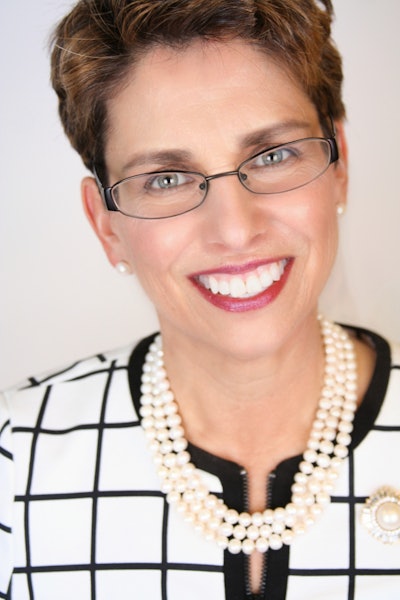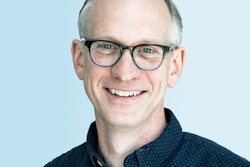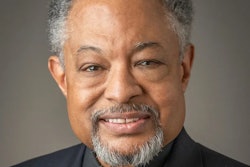As the U.S. faces a severe shortage of primary care physicians, nurse practitioners (NPs) are ready, willing and able to meet healthcare needs — if only they’re allowed to do so.
NPs are advanced practice registered nurses who have earned either a master’s or doctorate degree. Specialties include acute care, adult gerontology, emergency, neonatal, pediatric, psychiatric, women’s health and family practice. NPs are filling the primary care needs in many underserved communities, and today’s training is designed to equip them to address healthcare disparities.
An obstacle for maximizing NPs across the U.S. is the fact that the majority of states do not grant them full scope of practice. At present, only 22 states and the District of Columbia allow NPs to practice on their own to the full extent of their training. Other states allow a collaborative agreement with a physician, and some states, such as California, require direct supervision by a physician.
 Dr. Carolyn Montoya
Dr. Carolyn MontoyaIn January, an editorial in the Los Angeles Times advised legislators to “unleash nurse practitioners to improve Californians’ access to healthcare.” NPs are trained and qualified to take patient histories, perform physical exams, order lab tests, analyze lab results, prescribe medicines, authorize treatments and counsel patients about healthcare, but, the editorial argues, the requirement to do these things only under direct supervision hampers NPs from going into the communities that need them the most.
By positive example, the state of New Mexico, which has allowed NPs full scope of practice since 1993, has NPs setting up their own clinics in rural communities and improving healthcare outcomes.
“Since the inception of the nurse practitioner and nurse midwifery programs at the College of Nursing, it has always been committed to meeting the needs of rural and underserved populations,” says Dr. Carolyn Montoya, professor and associate dean for clinical affairs at the University of New Mexico (UNM) College of Nursing.
Addressing the Need
An article in Health Affairs from December 2018 notes that the number of NP graduates continues to rise, while medical school graduates remain at a plateau and only a small number are entering family and internal medicine. The article indicates that people who have access to a consistent primary care provider show better health outcomes, but there is predicted to be a deficit of 23,640 primary care physicians by 2025. Meanwhile, more than 22,500 NPs graduated from primary care programs in 2017.
The Affordable Care Act increased access to healthcare and the demand for quality healthcare providers, says Dr. Sophia L. Thomas, president of the American Association of Nurse Practitioners (AANP). Additionally, the aging baby-boom population and an increase in chronic disease drive the demand for primary care providers. In the last year, the more than 270,000 NPs in the U.S. delivered care to more than 1 billion patients.
“NPs begin their careers as nurses,” says Thomas. “This training embraces a holistic approach to care integrated with counseling that emphasizes prevention, understanding the whole patient and wellness promotion. This overarching perspective is embedded into the education of NPs and their practice — bringing together a holistic approach to patient care with clinical expertise to diagnose, prescribe and treat patients.”
Based on the AANP’s 2019 survey, approximately 12% of NPs work in communities with fewer than 10,000 residents and 31% work in communities of fewer than 50,000. Some states, such as California and Florida, have both urban and rural
 Dr. Sophia Thomas
Dr. Sophia Thomaspopulations in need of primary care. All students in the NP program at UNM must complete 300 or more hours of clinical rotations in a rural portion of the state.
“We make it very clear from the moment they query us about the program that it is the expectation that you will have a minimum of two rotations out of the Albuquerque area,” says Montoya. “There are many challenges in rural care that we want them to be adequately prepared to take on.”
Simulations
While cultural competence and diversity are discussed in the classroom, many NP programs are taking it a step further and presenting simulations that immerse students in the real life experiences of patients they may encounter.
Montoya says UNM students, many of whom come from New Mexico, are taught about healthcare disparities they will witness throughout the state. Last year UNM instituted a poverty workshop in which the students had to role-play a family who did not have adequate resources.
UNM also hires standardized patients. These are actors who learn details of a case and play the role of the patients. “We include some of the social determinants of health because we very much realize that…where somebody lives affects their health,” says Montoya.
Advancing Healthcare
In 2019, the Vanderbilt University School of Nursing received two HRSA grants to increase the number of NPs practicing in rural, underserved areas where there aren’t enough primary care providers. Both programs have a psychiatric/mental health component that integrates behavioral health into the primary care setting. Dr. Courtney J. Pitts, director, family NP specialty (FNP) and associate professor of nursing, is the Collaborative Academic-Practice (CAP) program’s principal investigator. CAP’s goal is to recruit and train a minimum of 60 family NPs over the course of the grant.
At Vanderbilt, both students and faculty participate in simulations. Pitts says she took on the role of a teenage mother in one case study. There is also a dean’s diversity lecture series for faculty and students.
“Part of our mission is to educate lifelong learners who are adaptable to an ever-evolving healthcare environment,” says Pitts. “We teach our students … how they are supposed to respond and treat holistically the patients that they see in their populations. This is often modeled by faculty who actively engage in practice, the community and other scholarly work.”
In addition to teaching, Pitts practices primary care in a clinical setting where she provides HIV management and care to individuals with HIV. During their clinical rotations, NP students work in underserved communities. They also join Vanderbilt medical students at the student-run Shade Tree Clinic in Nashville.
“We teach our students to consider the whole person,” Pitts
 Dr. Courtney Pitts
Dr. Courtney Pittssays. “You consider cultural norms, any structural barriers to care and their individual characteristics because in a clinic there is no one-size-fits-all.
“You’re treating the person first and the disease second,” she adds. “We’re also training [NP students] on telehealth. Making sure that we’re equipping our students to work in these resource-poor areas with everything they need to be successful.”
Since 1996, UNM College of Nursing has worked closely with N-NURSE (Navajoland Nurses United for Research, Service and Education), an organization of Navajo-area nurse leaders and educators, to implement projects that affect nursing in the Navajo Nation. This includes mentorship of potential nurses and nurses early in their careers, research and efforts to better serve the health needs of Navajo Nation. Montoya took 23 UNM nursing students to N-NURSE’s most recent conference.
“The students are hearing from the communities how they, as providers, can be more culturally informed when they’re working with those populations,” says Montoya.
Pitts says full scope of practice is essential to effectively addressing healthcare disparities. For those states that haven’t done so, she notes that the U.S. Department of Veterans Affairs (VA) has granted full practice authority to three of the four advanced practice nursing (APRN) roles, including NP.
“It speaks to the need for critical healthcare and the utilization of the APRN roles in filling the gap,” says Pitts. “It continues to be evident that NPs are having very positive outcomes, especially in these rural and underserved areas.
“When you have big players such as the VA backing full practice for APRNs, you really can’t deny it. The evidence is there.”
This article appeared in the Feb. 20, 2020 edition of Diverse.





















